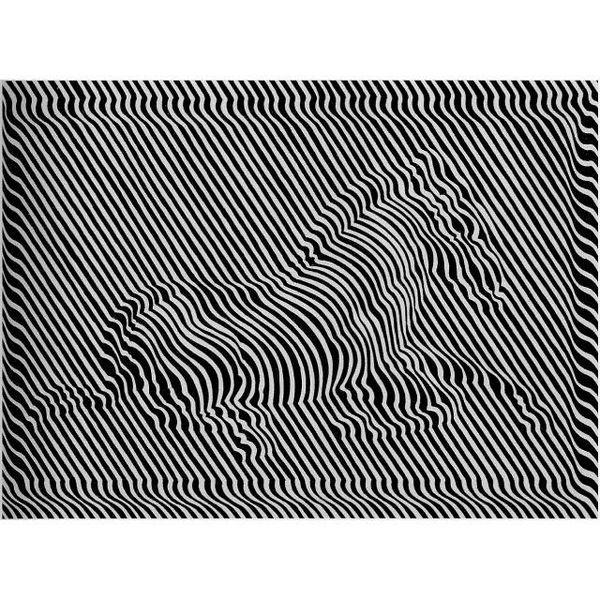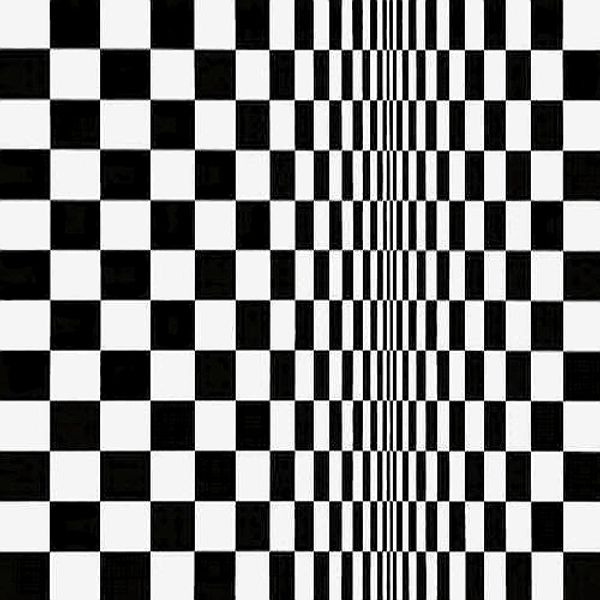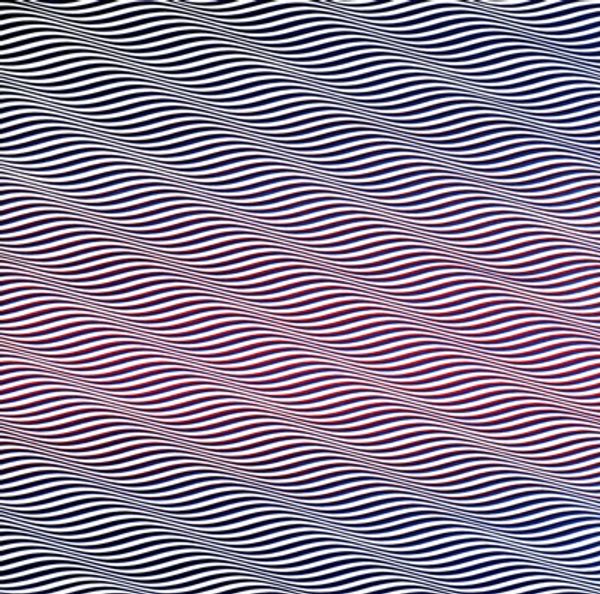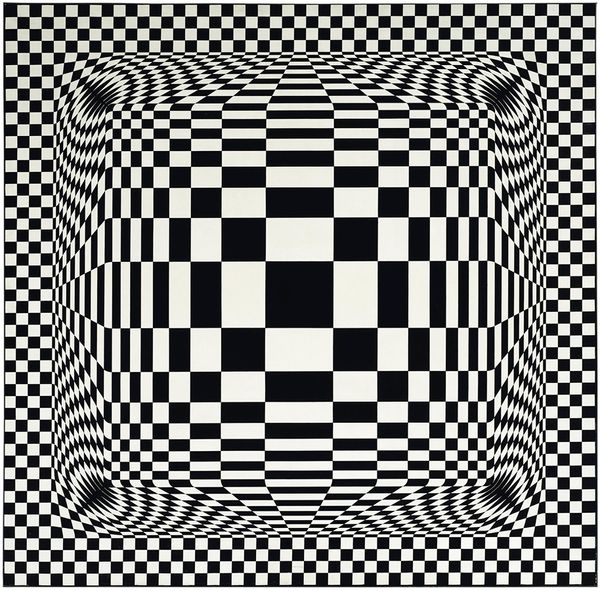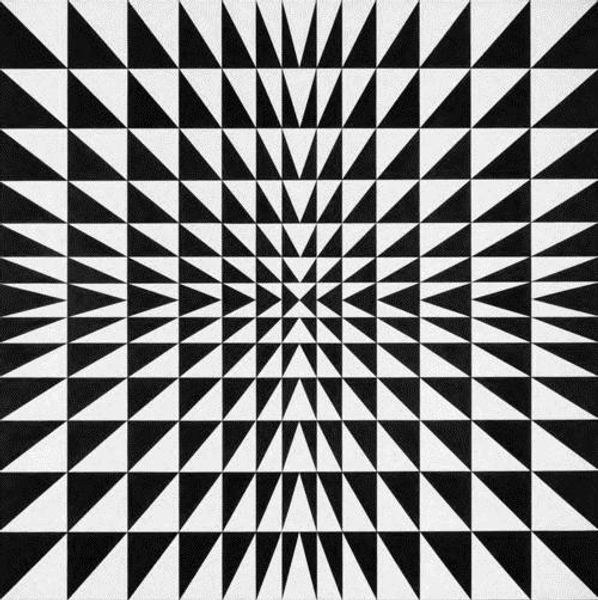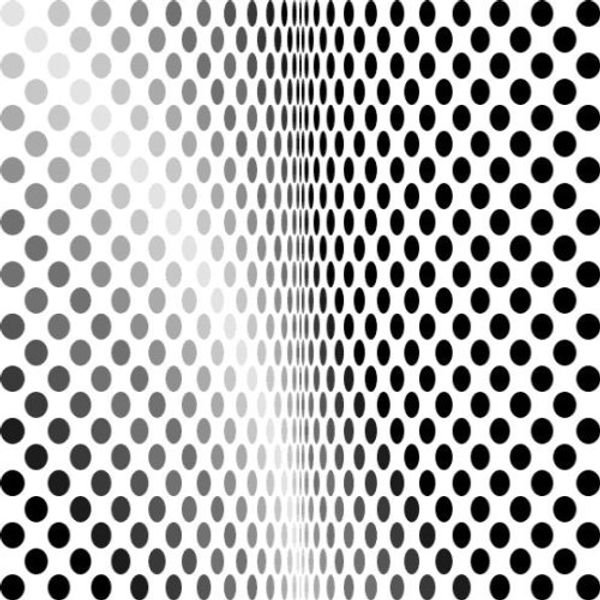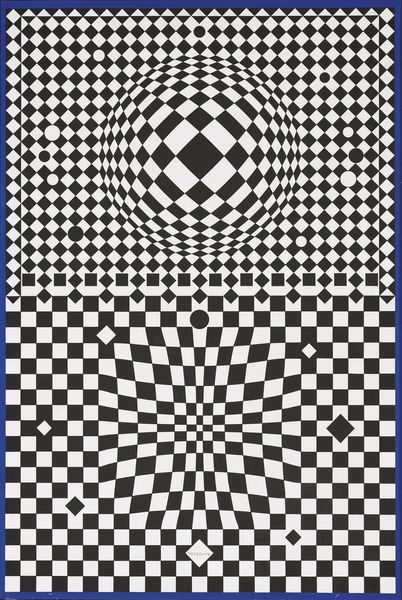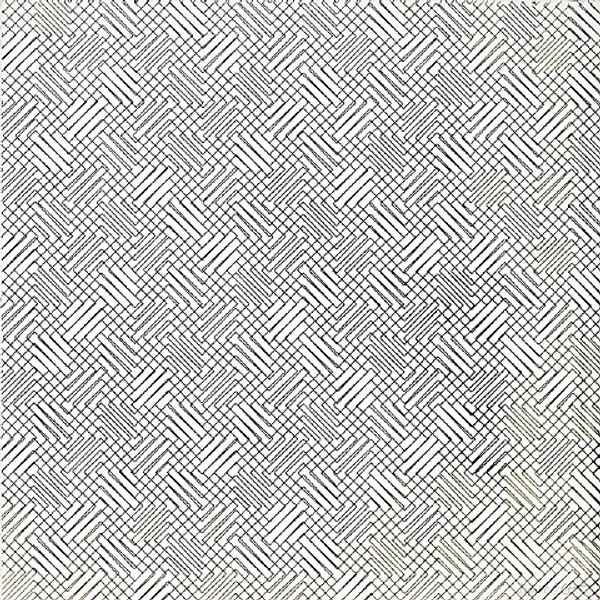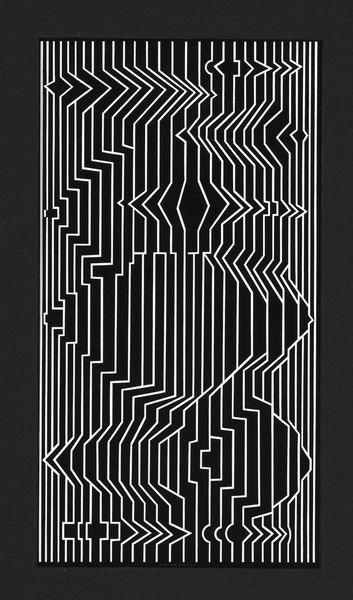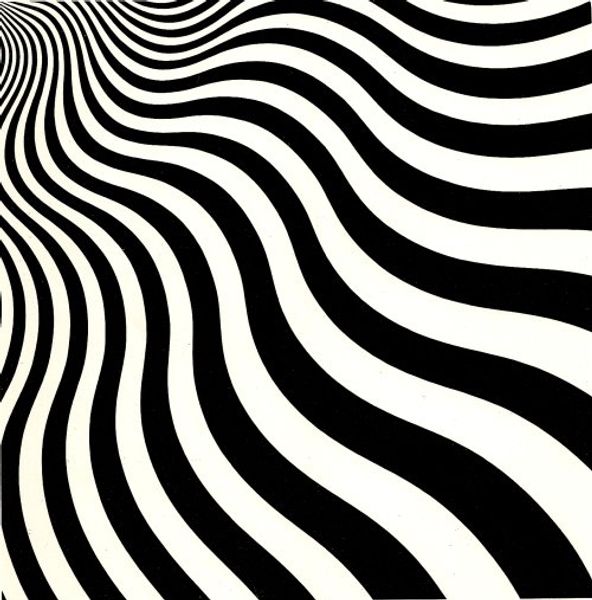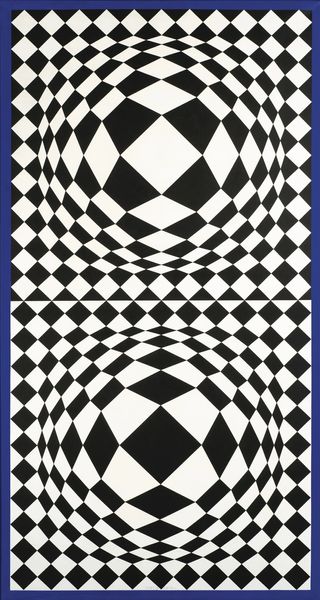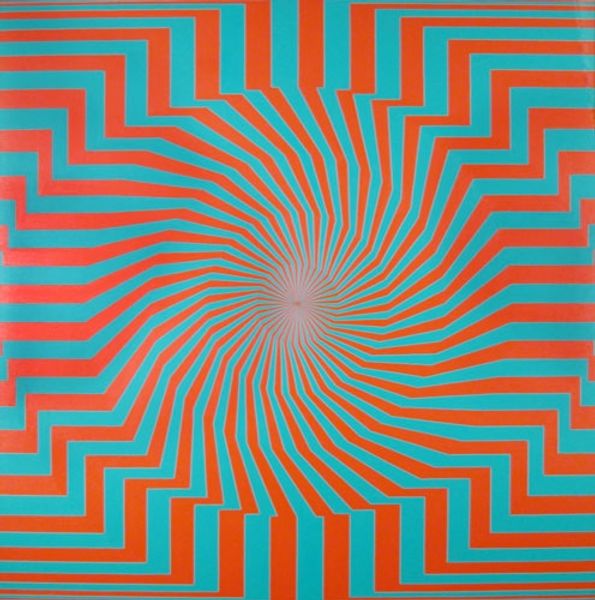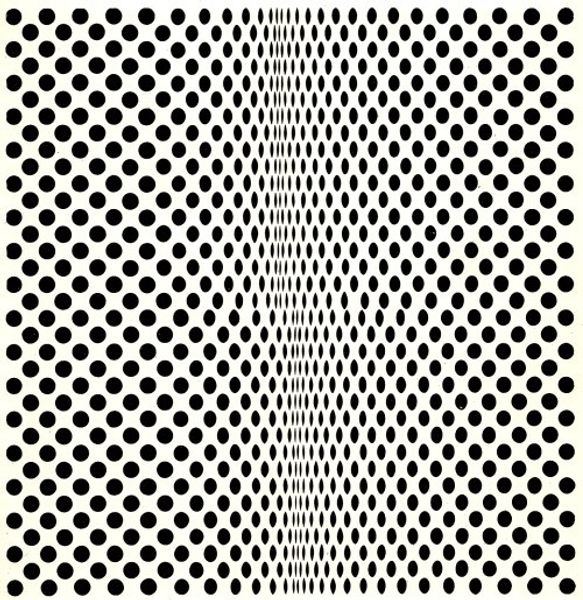
#
op-art
#
minimalism
#
pattern
#
geometric pattern
#
repetitive shape and pattern
#
minimal pattern
#
organic pattern
#
geometric
#
repetition of pattern
#
vertical pattern
#
abstraction
#
line
#
pattern repetition
#
layered pattern
#
combined pattern
#
hard-edge-painting
#
repetitive pattern
Copyright: Bridget Riley,Fair Use
Curator: Standing before us is Bridget Riley's 1966 piece, "Descending," a striking example of Op Art. Editor: Woah, it’s definitely doing something to my eyes! There’s an immediate kinetic feel—almost like the canvas is rippling. Curator: That visual vibration is key to Riley’s project. Looking closely, you'll notice it's all about black and white zig-zagging lines, precisely arranged to create this dizzying effect. Editor: I’m fascinated by the shift away from gestural painting towards this almost mechanical execution. What’s the social or artistic environment from which an image like this grows? Curator: Think about the ‘60s – a time of great technological advancement, and growing awareness about psychology, particularly visual perception. Riley was deeply engaged in the science of sight. The focus was drawn away from expressionism towards perceptual experience itself, and to how human interaction with technology could heighten our experiences. Editor: Interesting. Because for me it’s the tension between the precision of the hard-edge painting style and the almost uncontrolled visual effect that makes it so interesting. Is this what some have called "retinal art," because it directly engages with our vision in a bodily way? Curator: Absolutely. Riley used basic materials – paint and canvas – to create illusions of movement and depth. The labour involved in meticulously rendering those patterns speaks volumes, particularly at a time when industrial processes were revolutionizing artistic production. Editor: It feels almost rebellious to emphasize the labor while critiquing what labour itself was creating: potentially alienating industrial imagery, technological control. It certainly makes me think about the way that artworks are, for better or worse, bound within—and affected by—the contexts from which they were created. Curator: A powerful legacy, prompting us to question how we perceive, what we value, and how deeply art can engage us. Editor: This artwork leaves me considering the influence of social history on both an individual’s and society's sense of visual order.
Comments
No comments
Be the first to comment and join the conversation on the ultimate creative platform.
